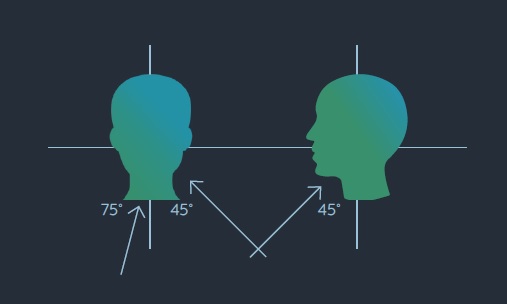The beauty of lighting not only lies in its functionality, but also in its quality. Over the next few weeks, we will uncover the various aspects of lighting quality, including topics such as:
- Lighting Levels
- Spatial distribution of light
- Directionality of light
- Colour of light
- Economics of light
- Light and the environment
Click on the links above for the previous articles in this series. Watch this space to catch the full discussion!
This week, we’re delving into the Directionality of Light.
The directionality of light describes the direction of the flow of light, along with the shadows it produces. Together, this influences our perception of the three dimensional world in which we live.
What is directional light?
A narrow beam of light which reaches an object directly, is referred to as directional light. Directional light is known to produce high contrasts and a marked modelling effect. The best way in which to view three-dimensional objects would be to have directional lighting from at least two directions.
Display lighting
When light from other directions is added, this then reveals the contours of the object on display. An example of this is seen in backlighting, when a silhouette effect is achieved against a bright background. Moreover, lighting from below (up-lighting) causes a very dramatic effect.

What is diffuse light?
Light reaching an object from multiple directions is known as diffuse light, and this produces hardly any shadow. As a result, the modelling effects are less pronounced and could even be absent with completely diffuse lighting. Completely diffuse lighting creates a dull and monotonous impression of a space, making it challenging to adequately identify objects, or even to judge distances.
Indirect light
When light is reflected by another object - a ceiling or wall, for example - before reaching its final destination, this is known as indirect light. As a wall or ceiling is typically matte, reflected light is mostly of a diffuse nature.
Light distribution of luminaires
The light distribution of luminaires and their location determines the direction given to the light. This, in turn, determines where shadows will be cast. Thus, it is important to choose a luminaire having the most appropriate light distribution when lighting an interior space.
Luminous intensity polar diagrams, or light distribution curves, are used to see how light reaches the working plane.

Learn more about photometrics and find out how a luminaire delivers its light at what angles and at what intensity. Click here to watch this quick video!
What’s next in this lighting quality series?
In the next article, we will be discussing the colour of light which will touch on topics such as colour rendering, temperature and coloured light.
Don’t miss out – subscribe to our newsletters and keep up to date on the latest technology and trends in electrical, lighting, water and solar!
Source: Signify “The Science of Lighting” by Wout van Bommel and Abdo Rouhana (2019: second edition)

